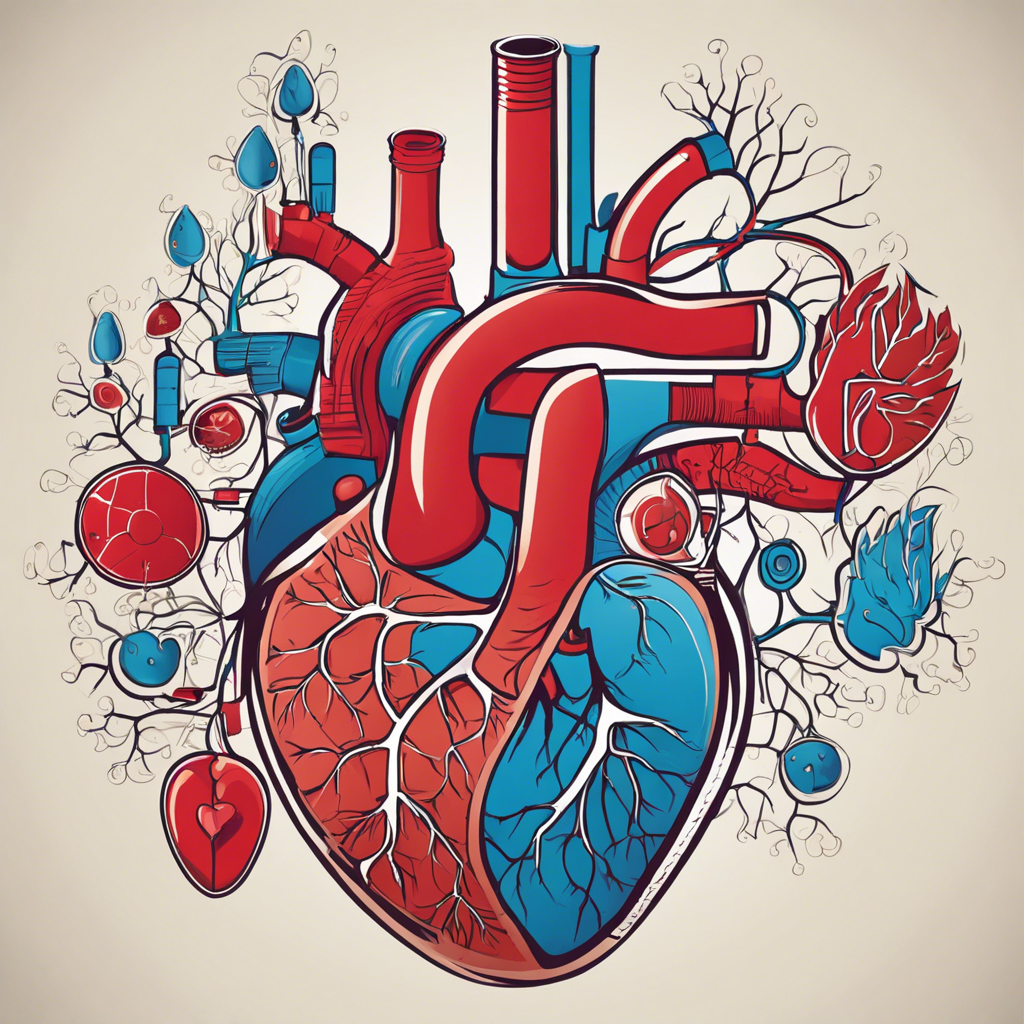The circulatory system is an intricate network within our bodies that plays a vital role in maintaining our overall health and well-being. It is responsible for transporting essential substances like oxygen, nutrients, and hormones throughout our bodies while also removing waste products. This complex system comprises the heart, blood vessels, and blood, all working in harmony to keep us alive and functioning. Understanding the circulatory system’s components and how they function is key to comprehending its significance in our daily lives.
At the heart of the circulatory system, quite literally, is the heart itself. This muscular organ, roughly the size of a fist, acts as the body’s pumping powerhouse. Its rhythmic contractions propel blood through a vast network of blood vessels, ensuring a continuous flow of life-sustaining nutrients and oxygen to every cell in the body. The heart is divided into four chambers: two atria and two ventricles. These chambers work in synchrony, contracting and relaxing to pump blood in a unidirectional flow.
Blood vessels, an extensive network of tubes, act as the highways for blood circulation. They transport blood away from and towards the heart, ensuring a constant supply of oxygenated blood to tissues and organs and facilitating the removal of waste products. The three main types of blood vessels are arteries, veins, and capillaries, each with specific functions. Arteries carry oxygenated blood away from the heart, pushing it towards body tissues.
Capillaries, the smallest of the blood vessels, form an intricate network throughout the body’s tissues. Their thin walls allow for the exchange of nutrients, oxygen, and waste products between the blood and the cells they serve. This exchange is crucial for sustaining cellular metabolism and overall tissue health. Capillaries then merge to form veins, which carry deoxygenated blood and waste products back to the heart, completing the cycle.
Within the circulatory system is blood, a vital fluid that acts as a life-sustaining medium. Blood is composed of various components, including red blood cells, white blood cells, platelets, and plasma. Red blood cells, the most abundant cells in the blood, carry oxygen, while white blood cells provide immune defense against pathogens.
Plasma, the liquid component of blood, transports nutrients, hormones, and waste products. Together, these elements of the circulatory system form a harmonious network, ensuring the delivery of essential substances and the removal of waste, enabling our bodies to function optimally. This intricate system is a testament to the marvels of human physiology, a complex yet perfectly synchronized ballet of life-sustaining processes.
The heart’s pumping action is the driving force behind blood circulation. With each heartbeat, blood is propelled through the blood vessels, creating a rhythmic flow. This flow ensures that oxygenated blood reaches every corner of the body, providing the necessary fuel for cellular function. Simultaneously, the circulatory system facilitates the removal of waste products, such as carbon dioxide, keeping our bodies clean and healthy. It’s a constant cycle of delivery and removal, a dynamic process that keeps our bodies in balance.
One of the circulatory system’s remarkable features is its adaptability. It can adjust blood flow to meet the body’s changing demands. For example, during exercise, the heart beats faster, increasing blood flow to muscles, while the blood vessels dilate to accommodate the increased blood volume. This adaptability ensures that the body receives the necessary oxygen and nutrients to sustain physical activity.
The circulatory system is also instrumental in regulating body temperature. Blood vessels near the skin’s surface can dilate, increasing blood flow to the skin and releasing heat, or constrict to reduce blood flow and conserve heat, helping to maintain the body’s core temperature. This thermoregulatory function is vital for maintaining homeostasis and overall health.
In conclusion, the circulatory system is a complex yet elegant network that ensures the constant flow of life-sustaining substances throughout our bodies. It is a testament to the marvels of human physiology, a finely tuned machine that keeps us alive and functioning. From the heart’s rhythmic contractions to the intricate network of blood vessels and the vital components of the blood, every element plays a crucial role in this grand symphony of life. Understanding the circulatory system is not just a fascinating journey into the human body’s intricacies but also a reminder of the remarkable processes that keep us alive and thriving.
